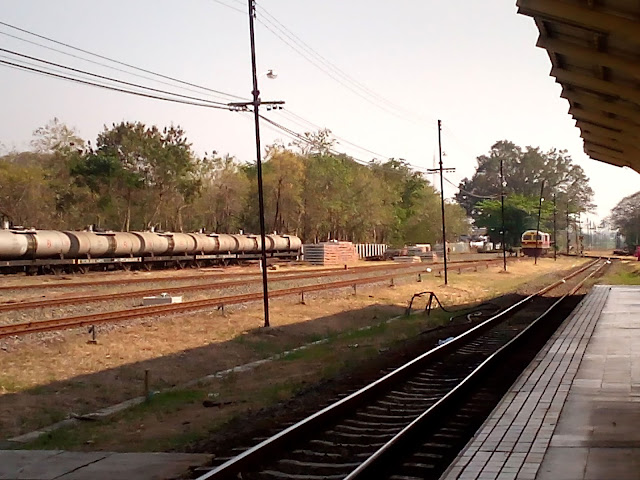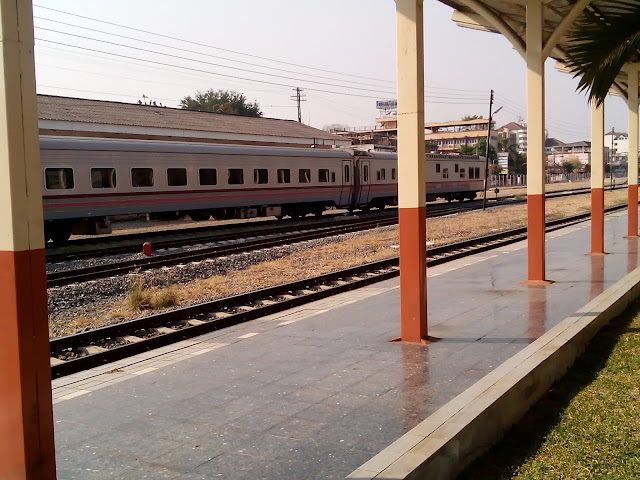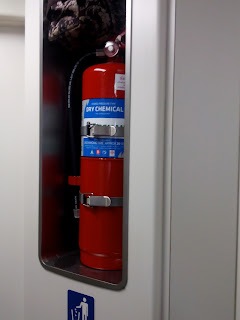ChiangMai THAILAND
HISTORY OF THAILAND RAILWAYS
1. The Beginning
Most of the Thai Railways current Railway Network was designed and constructed in the 1890's. The first railway in Thailand was the Paknam Railway, which followed the course of Bangkok's present Rama IV road. This line opened in 1893, but is no longer in existence. In 1897 the Railways System in Thailand was officially inaugurated into the Royal government. On January 1,1960 the Old Paknam Railway was closed and dismantled, and many of its stations were demolished.
2. The Lines
--a. Northeastern Lines - On March 9, 1891, King Chulalongkorn (Rama V) issued a Royal Proclamation ordering the construction on the first State Railway Line in Siam. The line was to be from Bangkok to Nakhon Ratchasima in the Northeast of the Siam kingdom. In 1887-1888 the British Railway Contractor, Messrs Punchard and Co., was commissioned by the Siamese government to survey for a line from Bangkok to Ayutthaya and then continuing onto Korat. The 'Korat Line' opened to traffic in 1900, and became the first section of what is now the Northeastern Line to Ubon Ratchathani. In 1974 Rail Service between Aranyaprathet / Khlong Luek (Thailand) and Poipet (Cambodia) was discontinued due to the Civil War in Cambodia.
--b. Northern Line - A branch line from the Korat Line (see section 'a.') to Lopburi, became the first section of what became the Northern Line to Chiang Mai. Construction of the 'Bangkok - Ayutthaya Railway' (71 km), the first part of the Northern Line, began in 1891 and finished in 1892. The opening day was March 26,1894. A second line was to go from Ayutthaya to Lopburi, then on to Lampang, Lamphun and Chiang Mai. From Chiang Mai a rail extension was planned to go North to Chiang Rai and eventually to Chiang Saen on the Mae Khong (Mekong river) and into China. To this day, the section of the Northern Line beyond Chiang Mai has not been constructed. The connection North to China was very attractive for trade, but impossible due to the mountainous terrain in Northern Thailand and Southern China.
--c. Southern Lines -.In 1903.a line opened from Thonburi Station to Petchaburi (150 km) on the West Coast of the Gulf of Siam, which eventually became the Southern line to Butterworth (Malaysia). At that time the line began at the 'Old' Thonburi Railway Station, now closed. The Hat Yai-Songkhla Line was closed in July 1978. In September 1922 the Hat Yai-Sungai Kolok Line opened with a bridge connecting Thai Railways with Malayan Railways at Rantau Panjang. In January 1919 the First 'International Express Service Train from the 'Old' Thonburi Rail Station to Malaysia opened. In July 1918 the Hat Yai-Padang Besar Line opened for connections with Malayan Railways. In 1978 Rail service between Sungai Kolok (Thailand) and Tumpat (Malaysia) was discontinued.
--d. Eastern Lines - A line was planned to Sri Ratcha on the East Coast of the Gulf of Siam, which eventually became today's Eastern Coast Line.
--e. Western Line - Also called the 'Thailand-Burma Railway' or the 'Death Railway'. In 1942, Japanese Military Forces occupied much of British colonized Burma as far as The Indian Border. In June 1942, the Japanese began construction of a railway from Bahn Pong (on Thailand's Southern Line) along the Kwae Valley to carry supplies in their war against India. This Rail Line went across the Three Pagodas Pass and connected with the Burmese Railway Network at Thanbyuzayat (Burma). About 60,000 allied P.O.W.'s and many more Malays and other Asians were used as forced labour. Most 'Allied' P.O.W.'s arrived in Thailand by train from Singapore. These men did backbreaking work from dawn to dusk in very difficult terrain, tropical heat and monsoon rains, with swarms of insects It is believed that over 100,000 Asians and more than 16,000 allied P.O.W.'s died during the construction. December 25, 1943 The Burma Line opened (for Japanese military use only). The original length of the railway was about 415 km but was in use only for a few months. By the end of the war, most of the railway was in poor condition, with many of the bridges bombed by the allied airforces. February 13, 1945 Central spans of most famous of the bridges, Bridge 277 ('Bridge over the River Kwae') were destroyed in allied air raid. In 1945 (before end of WWII) River Kwai Bridge was restored and re-opened. The River Kwai Bridge was finally destroyed on April 2nd 1945 by US Air Forces. From 1947-1958 the Nam Tok-Three Pagodas Pass section of Burma Railway was dismantled. Most of the original railway has by now been re-claimed by the jungle, and the tracks 're-cycled'. The first section from Bahn Pong to Nam Tok (about 115 km) re-opened in 1958. This section became Thai Railways Western Route. The best place from which to ride the 'Death Railway' is the River Kwai Bridge Railway Station (for timetable see Thonburi Line). The scenery beyond Kanchanaburi, is spectacular. Other parts of the railway, such as 'Hellfire Pass', can be visited from Kanchanaburi by songthaew. A private line was constructed from Thonburi to Ta Chin (on the coast) and became the Mae Khlong-Mahachai Railway, which did not connect with the main State Railway Network.
--f. Bangkok Skytrain - On December 05, 1999 the First 2 Bangkok Skytrain Lines (BTS - 'Elevated Railway') opened (Light Green and Dark Green Line: National Stadium toSaphan Taksin and Mor Chit to On Nut)
--g. Bangkok Subway - July 03, 2004 the First Bangkok (Metro) Subway Line (MRT) opened (Blue Line initial Section -- Hualamphong-Bangsue)
--h. Thai-Lao Rail Link - In 1994 Rail track from Nongkhai Station to Thai-Lao Friendship Bridge was laid. March 20, 2004 An agreement was signed between the Thai and Lao governments over the 3.5 km track extension from the Friendship Bridge to Tha Nalaeng (the first ever railway in Laos). (See 'Future Route' Section for more Information).
3. History of the SRT
--a. The Royal State Railways of Siam was first established under the Ministry of Public Works in October 1890, and was divided into two departments, namely Northern and Southern Railways, which were finally merged into one and became the Department of the Royal State Railways of Siam June 5,1917. On July 1, 1951, RSR changed its name to the present State Railway of Thailand (SRT), which gained control of the whole system, and by which time most of the present network had been constructed.
--b. After the name changed, a push towards modernization included replacing all old steam locomotives with diesel cars. The first diesel locomotive to the system in 1982 .In 1975 the Steam Maintenance Center at Makkasan closed and most of the SRT steam engines were transferred to the depots in Thung Song and Hat Yai
In 1982 Thai Railways discontinued use of Steam Engines for regular service.
--c. During Japanese occupation of World War II, most of the railway buildings, lines, and bridges were bombed and destroyed throughout the whole kingdom. In 1945 the restoration process began.
4. Bangkok Stations History
--a. Hualamphong Station -- Construction started around 1910 to replace the old Bangkok Railway Station. Hua lamphong opened for service on June 25, 1916. Hualamphong Rail Station first opened on 25 June 1916, after six years' construction. The site of the Hualamphong Rail Station was previously Thai Railway's Maintenance Centre, which moved to Makkasan in June 1910. At the site of the 'Old Bangkok Railway Station' there is a pillar nearby commemorating the initiation of Thailand State Railways in 1897.
--b. Bangkok Noi Station -- the 'Old' elegant Thonburi Railway Station was once the start of the 'Thai-Burma Railway', on the West Bank of the Chao Phraya River next to the Bangkok Noi Canal. In March 1945 the 'Old' Thonburi Rail Station was destroyed in an allied air raid. In 1950 the 'Old' Thonburi Station was reconstructed and re-opened. The 'old' Thonburi Station was officially closed in October, 2003. The Rail Services were switched to the Bangkok Noi (renamed Thonburi) Sation (1 km away) to make way for the Sirirat Hospital extension at its previous site.
5. Guage-
-a. Past -- The East Bank System (including Northern Line) tracks still were a standard gauge of 1.4435 m, while the West Bank System was 1 m gauge. In September 1919 an order was given to standardize gauges. All new state railway lines were to be built in meter gauge, and all existing 1.435 m. lines to be converted to meter guage within ten years, to make them compatable with those tracks in Malaysia, Burma, and Cambodia. They began in 1920 and finished in 1930.
--b. Present -- In 2005 SRT had 4,070 km of track, all of it meter gauge. Nearly all is single-track, although some important sections around Bangkok are double or triple-tracked and there are plans to extend this.
6. Types of Train Carriages
--a. Passenger
1. Long-Distance -(See 'Special Types of Train Service' Section for details)
2. Short-Distance / Commuter - (See 'Special Types of Train Service' Section for details)
--b. Freight -- Phahonyothin and ICD Ladkrabang is the Main Bangkok Freight Terminal. Bang Sue Junction is Thailand's Largest Freight Yard and so, the Main Freight Terminal in Thailand. around 1968
SRT freight terminal relocated from Hualamphong to Phahonyothin
7. Size / Speed
. Janine Yasovant
 |
| Pop1 |
SRT - Contact Information - Thai Railways
www.thairailways.com/info.srt-contact.html
e-mail: passenger-ser@railway.co.th. fax: + 66 2 225 6068.
Individual Thai Railways Stations Telephone Numbers.
Chiang Mai Railway Station: 053 245363.



































































































